What’s UWB & How Does It Compare To GPS For Pets?
Ultra Wideband (UWB) technology is slowly breaking into pet trackers as well - but is it the best choice for an outdoor pet, a highly active one, or one that escapes on the regular? Let's find out how it compares to dedicated GPS pet trackers out there.
You might’ve heard about Ultra Wideband (UWB) technology for tracking down cars or locating items – but what about pets? Can UWB technology help you track down your runaway dog or escape artist cat?
Here’s our take as leading experts on pet tech: when it comes to a missing pet, UWB trackers might not be the best choice. With their limited range and build, they’re a better choice for non-moving items you’ve misplaced indoors. Not living, constantly moving pets. (Which is where a dedicated pet tracker with unlimited range and real-time tracking can be a lifesaver.)

Find out where your cat spends their time.
Read moreWhat’s Ultra Wideband technology? And how does it work?
Much like Bluetooth and GPS, UWB is a wireless communication technology that can help you find a misplaced object or item.1 They’re usually limited in range compared to GPS trackers. (Up to ~650 feet/200 meters, tops.) They’re also highly precise – able to pinpoint a missing item down to a few inches. They transmit data at high speeds between devices. Which makes UWB trackers an excellent choice for location a missing pair of keys or wallet on a busy workday morning. Connecting to your phone, a UWB device can guide you to exactly where you might’ve dropped your item.
UWB tech might come in tag, chip, or in indoor tracking system form. In fact, many smartphones are UWB-compatible, including Samsung, Android, and even iPhones. You can enable UWB settings on them – and then connect to a network of devices to help you track down a missing item. (Like Apple’s Find My network or the upcoming Android Find My Device network.)
Which, at the same time, might not actually be the best choice for a missing dog or cat.
Read more: “Find My Device” Trackers: Not Ideal For Pets
How does UWB work?
UWB technology uses radio waves to locate objects or items within short range in real-time.2 It sends short, low-energy pulses which help it track an item with high precision – even if you’ve, say, lost your keys in a messy bedroom or a cluttered desk. It’s why you’ll find UWB tech most popularly used in manufacturing industries to keep track of parcels, radar imaging, and even in baby monitors!
Plus, like we’ve covered, even some Bluetooth-powered item finders – like the AirTag and the upcoming Google AirTag alternative – include UWB as part of their build. And in terms of its precision, accuracy and low power consumption, UWB might even outperform GPS locators as an item finder of choice.
But does that make it a good option for pets? Not quite.
What’s the range of UWB?
In general, UWB technology can track items up to around 650 feet/200 meters. However, they work best around 3-164 feet/1-50 meters. Aka, when you’re standing inches away from your missing object. Which still place it at an advantage to most Bluetooth trackers – but still less than most GPS trackers which help you track over an unlimited range. Here’s a quick breakdown of these tracker ranges:
| UWB tech | Bluetooth trackers | GPS trackers |
| Up to 650 feet/200 meters (best within 3-164 feet/1-50 meters) | 33-400 feet (10/121 meters) | Unlimited |
So if you’re, say, trying to track down a dog that’s run off on a hike in the woods, you’re unlikely to find them with a UWB or Bluetooth tracker.
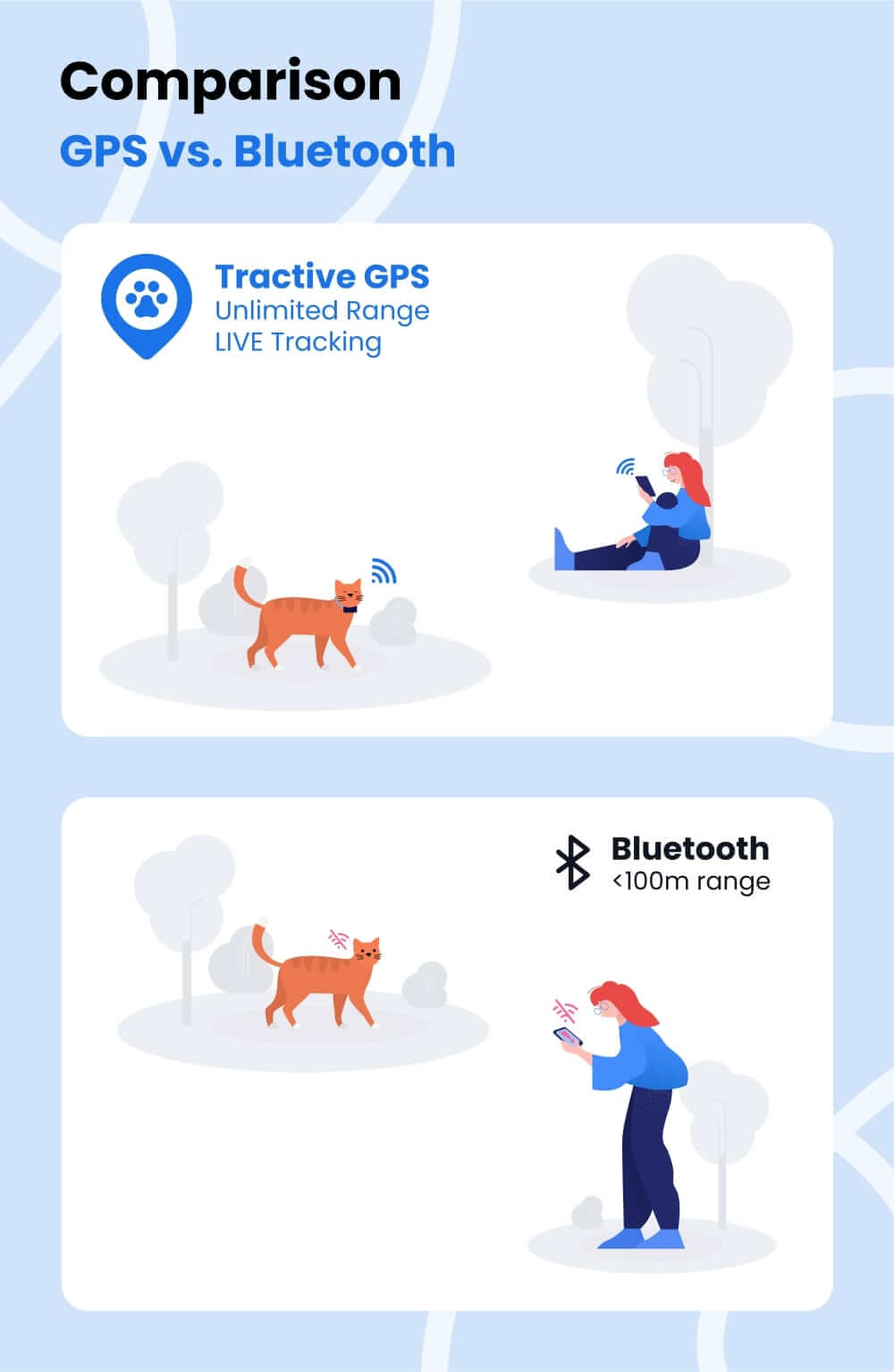
Does UWB track in real-time?
Yes – but within a super limited range. You’ll still need to be within inches to your missing item to be able to locate it accurately. With a UWB chip implanted into a device, it’s still possible to track moving objects – but again, only within a short range. Which is why UWB makes sense for non-moving missing items like keys or backpacks. (Aka, objects that don’t tend to move around by themselves.)
A UWB tracker might not be the best choice for a missing dog or cat that jumps the fence, escapes home when in heat, or hides away when sick. On average, most lost pets wander anywhere between 2-5 miles (3-8 km)3 before they’re reported missing.4 Just to give you a heads up on why a GPS tracker with unlimited range is such a lifesaver.
Read more: Kathy the Beagle who was kidnapped during training – but rescued by her Tractive GPS
How does GPS tracking work for pets?
In a nutshell: a GPS tracker for pets means an entire sky full of satellites connecting to your device to help you track down your missing dog or cat – in real-time, and no matter where they are. (Or where you are.) So with your trusty Tractive device, you can…
Track your pet – even while on vacation
With its built-in SIM card, your Tractive device connects to mobile networks across 150 countries. Which means you can track your pet from no matter where you are in the world – with just a glance at your phone. And, yes, which also means a monthly fee. (That’ll cost you less than your monthly Netflix subscription.)
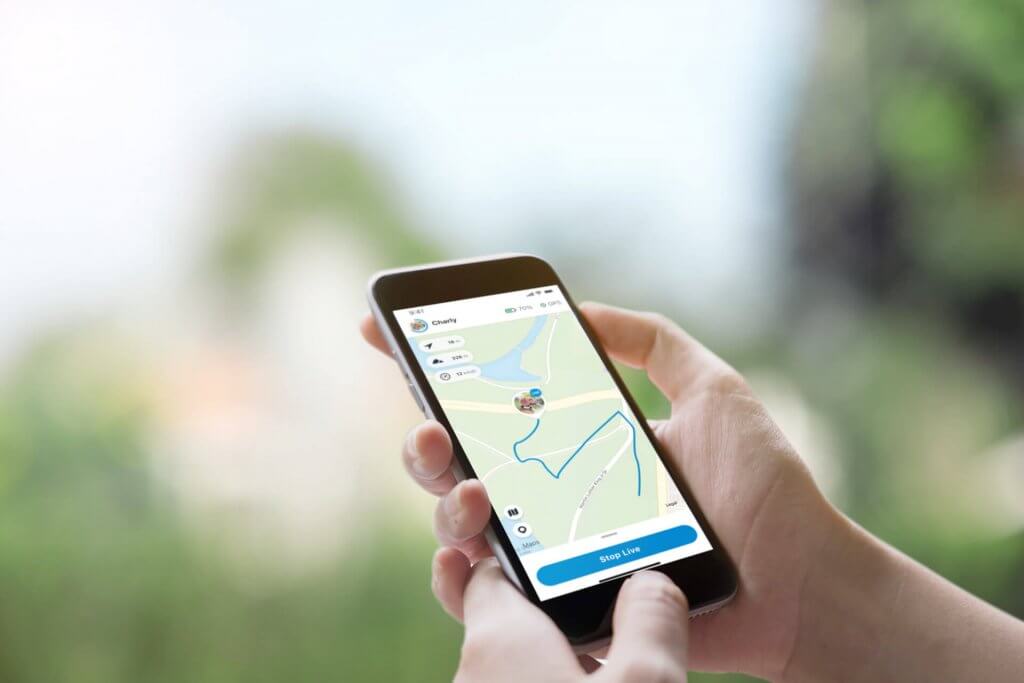
GPS trackers without SIM cards do exist. Plus, some don’t offer any subscription plans either. In fact, most UWB and Bluetooth trackers don’t come with any ongoing costs – just an upfront payment for the tracker itself. But their biggest downside? They can’t track your lost dog or cat in real-time. Or, since you’re only covered by a single provider, you might lose coverage in certain areas. Which, in an emergency, can make all the difference.
Read more:
- GPS Tracker Without SIM Card? Your Questions, Answered.
- Is There A Cat Or Dog GPS Tracker Without Subscription?
- GPS vs Bluetooth Trackers: What’s Best For Pets?
- Tile vs GPS For Dogs: Which Works Better?
Escape-proof your home and backyard
Let’s face it: setting up an outdoor fence is expensive. (And a cumbersome investment in the long run.) And despite your best efforts, your dog might still dig under it or your cat might still sneak past it. Once they’ve escaped past a certain range, both Bluetooth and UWB trackers prove to be pretty useless. Some UWB products do offer geofencing capabilities – but they’re still built for tracking items and objects. Not pets.
With an invisible GPS fence, you can escape-proof your home and backyard – and let your pet’s tracker do all the hard work for you. How? Simple. Just set up a Virtual Fence on your Tractive app. Mark out a “safe zone” or any “no go zones” – and get an escape alert directly to your phone the second they venture out of it.
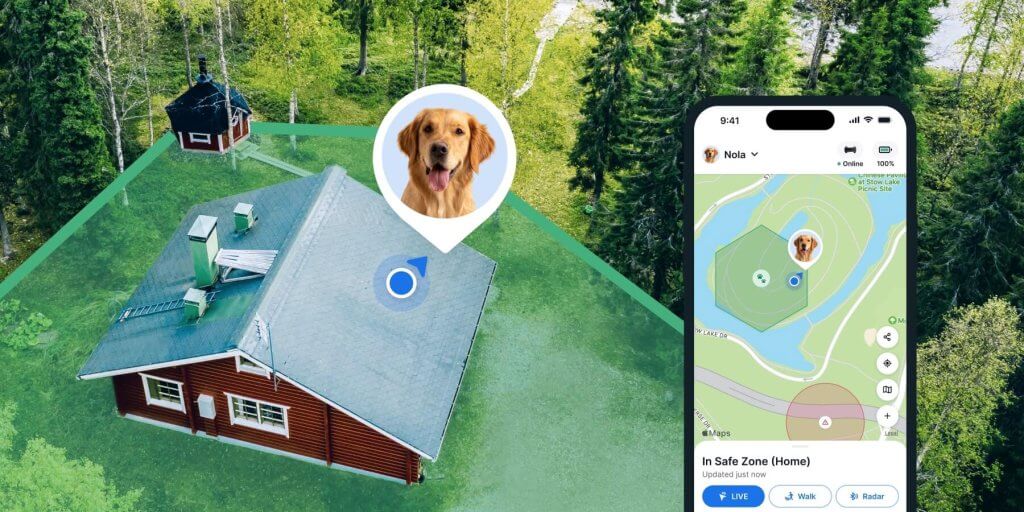
Track your pet both near & far, indoors & outdoors
Another criticism GPS trackers face? How they don’t work indoors. That’s where UWB trackers tend to shine, since they’re much more precise and can help you locate a missing object down to a few inches.
💡Luckily, your Tractive device doesn’t just include GPS tracking – but a whole range of features to locate your dog or cat at close range. (Including indoors.) Like, for example:
- Bluetooth-powered Radar Mode, to help you track your pet within Bluetooth range. (33-330 feet – or 10/100 meters)
- Light & Sound features, to help you locate your pet with an LED light – or a high-pitched ringtone.
- Augmented Reality (pictured here) to help you locate your pet with an overlay. (Pictured here.)
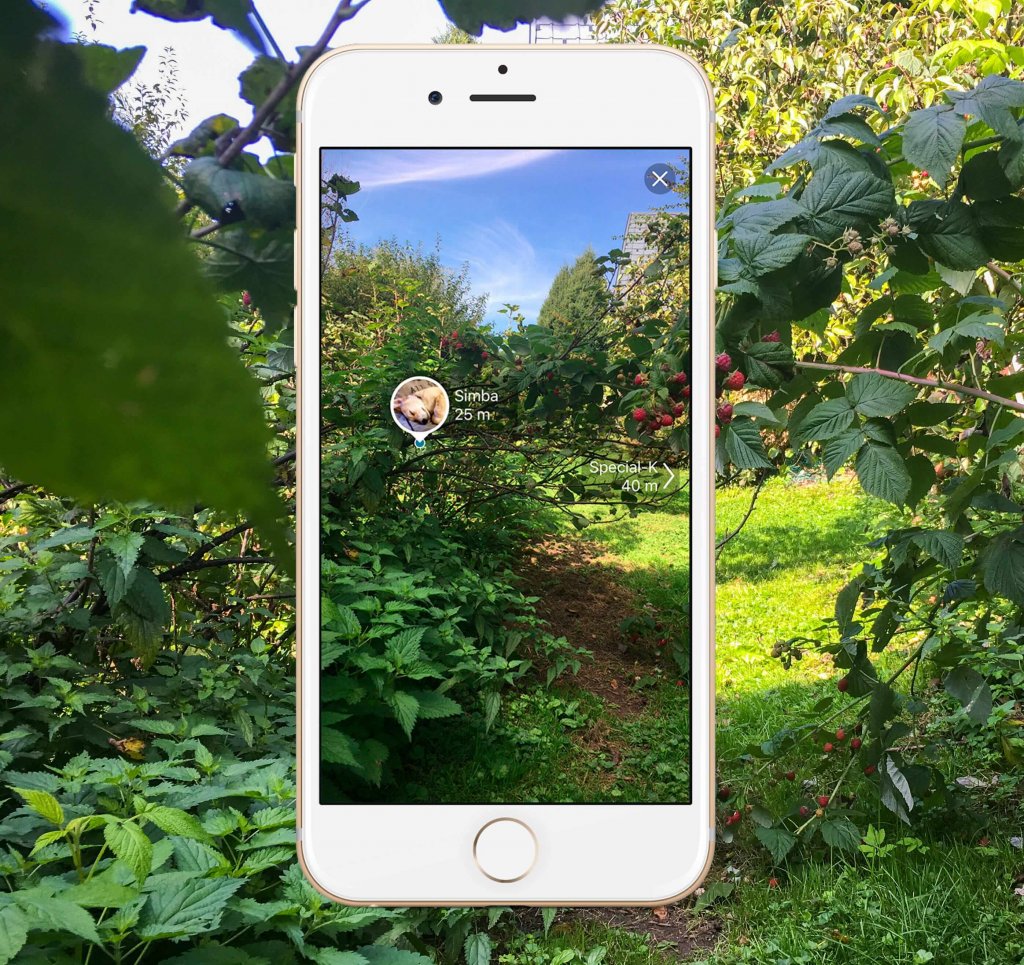
💡 Some UWB products also come equipped with Augmented Reality features – which work only within a limited range. Unlike Tractive’s LIVE Mode, which lets you track your pet, no matter where they are.
UWB vs GPS: Pros, cons & everything in between
With all this said, UWB is still an excellent tracking technology – just not for pets. It’s a great option for keeping track of warehouse inventory, in healthcare environments, and for locating objects. Some UWB products even include geofencing and Augmented Reality features for improved tracking. And at the same time, it might work for pets only in certain situations.
| UWB | Tractive GPS | |
| Specialized for | Indoor environments | Indoor & outdoor environments |
| Powered by | Radio frequency | GPS, Wifi, Mobile networks |
| Range | 650 feet/200 meters | Unlimited |
| Cost | ~$3750 for a full setup6 | $49.99 + a monthly fee lower than a bag of dog food |
| Real-time tracking | Limited to 164 feet (50 m) | |
| Virtual fence/Geofencing | ||
| Health alerts | ||
| Activity tracking | ||
| Sleep tracking | ||
| Location History |
The biggest downside for UWB tech is its limited range – only able to track non-moving items in real-time under 650 feet/200 meters. Which, if you’re considering a runaway dog or cat on a hunting spree, just isn’t far enough to track safely.
So if you’re scrolling through Amazon and come across a tracker with UWB, you’re now better informed and have a more realistic picture of its tracking capabilities. Because when it comes to our pets, it’s always worth it going the extra mile – for their safety and your peace of mind.
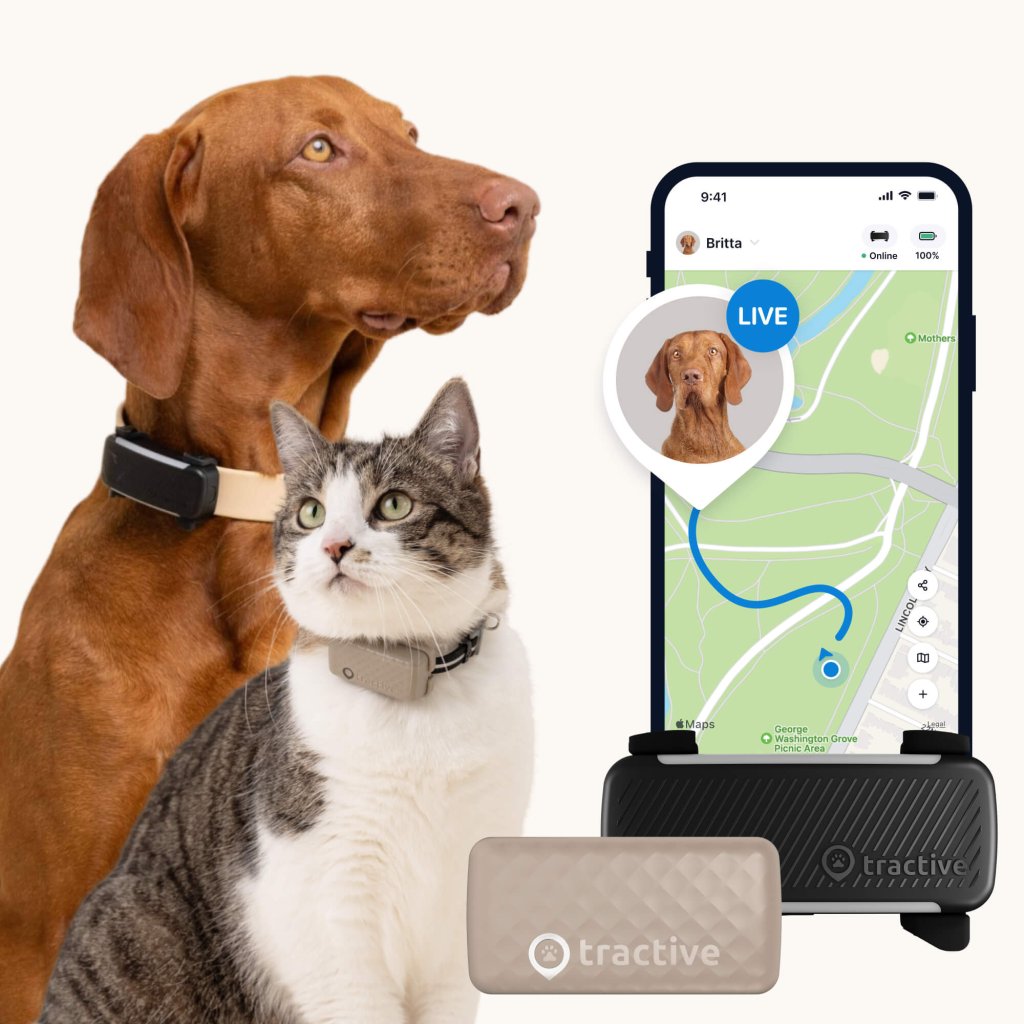
Keep your pets healthy & safe
Get real-time location information, wherever they go. See how much – or how little – activity they’re getting. And get Health Alerts if something might be wrong.
And if you’ve found this post useful, share it with a fellow tech-savvy pet parent – and let’s help build a safer, kinder world for our furry friends together.



